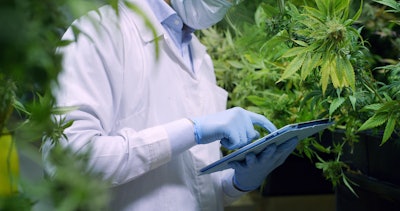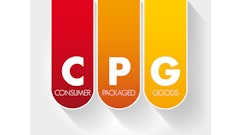
It’s June, and it’s staggering to look back and reflect on the magnitude of the disruption the pandemic wreaked on global supply chains and manufacturing.
Like most industries, the cannabis and cannabis packaging industries were significantly impacted by the pandemic. Now, as emergency restrictions are easing and business operations are beginning to resemble pre-pandemic operations, it’s worth looking back at the last year to evaluate the impact the Coronavirus disease (COVID-19) has had on the cannabis industry. More specifically, let’s examine the current cannabis packaging industry and cannabis packaging supply chains to determine where to go from here.
Every year, global supply chains are impacted by the Chinese New Year, as factories in China close for the 16-day holiday, which crosses from January into February. In 2020 however, instead of factory workers returning in droves to resume production, pandemic-driven lockdowns set in and “global commerce came to a virtual halt.” This, of course, is because much of the world's manufacturing is based in China. And, while these restrictions helped to slow the spread of the virus, they had the inevitable side effect of disrupting global commerce and supply chains.
Most manufacturing of single-use packaging, including cannabis packaging, is outsourced to China due to cost. As a result, the early months of the pandemic significantly impacted the cannabis packaging industry.
Shipping prices for containers transporting goods overseas rose to their highest levels since 2011 and major ports across the globe were inundated with volumes that far exceeded their capacity. This, combined with strict cannabis packaging regulations that necessitate child-resistant packaging in order to legally sell cannabis products led to a temporary shortage of cannabis packaging.
At the same time, the COVID-19 lockdowns in the United States led to a significant spike in demand for cannabis. Needless to say, the concurrent demand spike and packaging shortage were a major source of stress for the cannabis industry during the early months of the pandemic.
However, as late spring approached and COVID-19 remained dire, there were some positive developments that eased the pandemic-related stress on the domestic cannabis industry, including the functionality of cannabis packaging supply chains.
Throughout the pandemic, domestic supply chains faced less disruption than global supply chains. Local and regional supply chains that were previously deemed inefficient and costly were suddenly cast in a new light. Localized supply chains are now seen as a form of competitive advantage because they’re better equipped to handle market shocks and economic disruptions, such as those caused by COVID-19.
Looking at the cannabis industry, in which compliant packaging is crucial, there was a shift toward sourcing domestically produced packaging. The cannabis industry embraced an ethos that emphasizes a closer collaboration between a business and its vendors because it’s one of “the only sure protections against supply bottlenecks and inventory shortages, both of which can otherwise get in the way of business success.”
Another development that aided the domestic cannabis industry and bolstered cannabis packaging supply chains was the industry’s elevation to the status of “essential” business. The importance of cannabis being deemed “essential” cannot be overstated. This development has both short-term and long-term implications for the cannabis industry and cannabis packaging supply chains.
In the short-term, the “essential” status means states essentially “put the cannabis industry in the same category as pharmacies, hospitals and other sources of legitimate medicine.” This was a major win not only for cannabis advocates, but also for cannabis packaging companies because they were able to keep their supply chains afloat while continuing to produce and distribute products.
The “essential” status of the cannabis industry also helped ease the pressure of the pandemic-driven demand spike for cannabis. According to Bank of America's cannabis analyst, Christopher Carey, by the end of April 2020 "our checks across North America were consistent: regardless of region, cannabis purchases have accelerated."
The need to adapt and remain flexible in response to the pandemic also led to rapid regulatory changes in local cannabis markets that would otherwise have taken months or years to debate. Most of these changes, such as the increased availability of cannabis delivery services, were pushed through municipalities quickly and easily.
So, how is this change in the handling of cannabis-related regulatory processes relevant to supply chain professionals in the cannabis packaging space?
The regulatory momentum that allowed municipalities to introduce new regulations at speeds never before seen in the cannabis industry is also felt at the state level. This momentum is building at the federal level as well, albeit more slowly. And, while federal cannabis legalization is still a ways off, it is important for supply chain professionals in the cannabis packaging space to consider the implications of these rapid regulatory changes happening at the municipal and state levels.
Just this past fall, in the throes of the second wave of the pandemic and a divisive presidential election, the momentum for legal cannabis was such that “in every state where medical or recreational cannabis was on the ballot, it was approved.” Five new states legalizing cannabis in the same regulatory cycle represent thousands of new cannabis businesses with one major thing in common -- the need for compliant cannabis packaging.
If this rapid trend toward cannabis legalization at the state level continues, additional cannabis packaging supply chain constraints could occur. Scalable processes are going to become increasingly important as cannabis packaging operations grow their footprints in order to meet the expected demand surge for cannabis packaging.
Since Colorado and Washington became the first states to legalize recreational cannabis a little less than a decade ago, the demand for cannabis packaging has grown at a consistent — albeit constrained — rate due to the slow-moving regulatory environment.
What will happen if the demand for cannabis packaging continues to rapidly increase? How will cannabis packaging supply chains adapt next fall, when three more states are expected to vote to introduce legal cannabis programs? This is in addition to current legal states, including the five new states that just legalized cannabis in the 2020 election cycle.
Furthermore, most cannabis packaging is made from plastic and there’s a global increase in resin prices. In North America, “prices for polypropylene and other commodity materials used in molding have continued to rise...and show no signs of slowing down any time soon.” If resin prices continue to increase while there’s a demand surge for cannabis packaging, will cannabis packaging providers be able to keep up with growing price fluctuations and sourcing challenges?
While there are many challenges that need to be addressed as cannabis packaging supply chains grow and become increasingly complex, the overall outlook is bright. As we begin to emerge from the pandemic, it’s important for cannabis packaging companies to remember the lessons learned from the supply chain challenges of the past year and become more resilient.
Compared to many other industries, the cannabis industry is well-positioned for growth and resilience, as are cannabis packaging supply chains.



















